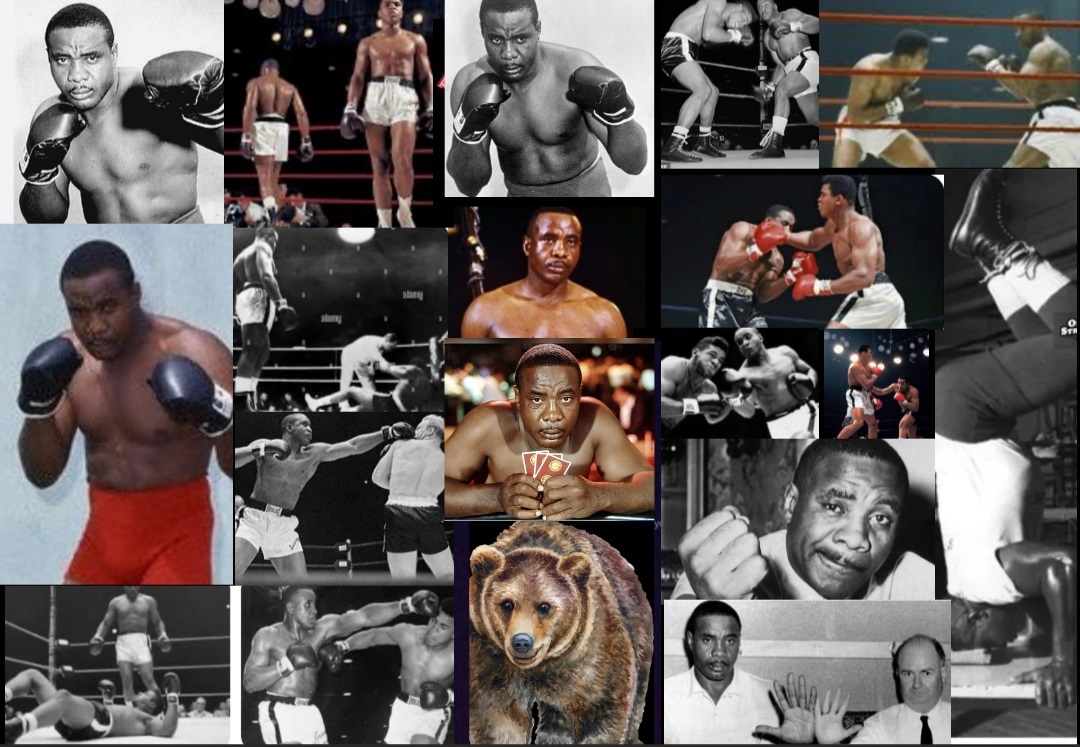

Sonny Liston, born Charles L. Liston on May 8, 1932 (though some sources suggest 1930) in Johnson Township, Arkansas, grew up in dire poverty as the 24th of 25 children in a sharecropping family. His early years were defined by hardship, including a physically abusive father and limited formal education. Liston’s illiteracy and rough upbringing pushed him toward crime, leading to his first prison stint in the late 1940s. It was during his incarceration at the Missouri State Penitentiary that Liston discovered boxing, quickly demonstrating raw talent and power that earned him recognition and a pathway out of a troubled life.
Liston began his professional boxing career in 1953 under the management of organized crime figures, which added to his already intimidating aura. Standing 6’1″ tall with an 84-inch reach, Liston possessed a unique combination of size, strength, and technique that made him a formidable presence in the ring. His jab, often compared to a battering ram, is considered one of the most powerful in boxing history, capable of staggering opponents and setting up devastating combinations. In addition to his jab, Liston had concussive power in both hands and an exceptional ability to cut off the ring, overwhelming even skilled boxers.
Liston’s record stands at 50 wins (39 by knockout), 4 losses, and no draws. He had an astounding 78% knockout ratio, demonstrating his ability to finish fights decisively. He became the World Heavyweight Champion in 1962 by knocking out Floyd Patterson in the first round, becoming the first man to defeat Patterson in such dominant fashion. He repeated this feat in their rematch in 1963, also ending it in the first round.
Liston’s path to the title was marked by victories over highly regarded contenders, including Cleveland Williams (twice) and Zora Folley. His ability to dismantle opponents earned him a reputation as one of the most feared men in boxing, and his stoic demeanor only added to his mystique.
In 1964, Liston faced the brash and undefeated Cassius Clay (later Muhammad Ali). Entering the fight as a heavy favorite, Liston was outboxed and failed to answer the bell for the seventh round, citing a shoulder injury. The fight shocked the world and marked the beginning of Ali’s legendary career. Their rematch in 1965 ended in even more controversy, as Liston was knocked out in the first round by a “phantom punch” that many believe barely connected. The unusual circumstances of both fights fueled widespread speculation, including accusations of mob influence and fight fixing.
After losing his title, Liston continued to box, compiling a string of victories against lesser opponents to stay relevant in the heavyweight division. He maintained his intimidating presence, delivering highlight-reel knockouts and proving that his power remained undiminished. However, his advancing age and lifestyle choices began to take their toll, and a loss to Leotis Martin in 1969 effectively ended his hopes of regaining the title.
Sonny Liston was found dead at his home in Las Vegas on December 30, 1970, though he may have died days earlier. The official cause was listed as a heroin overdose, but the circumstances surrounding his death remain suspicious. Many theories have been proposed, including foul play linked to organized crime or retribution for unpaid debts. The mystery of his death only added to the enigmatic legacy of Liston.
Liston’s dominance during his peak, combined with his air of invincibility, made him a figure of awe and fear. He is widely regarded as one of the most powerful punchers in boxing history and one of the greatest heavyweights to ever compete. Despite his troubled personal life and the controversies surrounding his career, Liston’s ability to command respect in the ring cemented his status as an enduring icon in the sport. His rise from poverty to the heavyweight championship, coupled with the tragedy of his later years, has made his life story a poignant chapter in boxing history.
